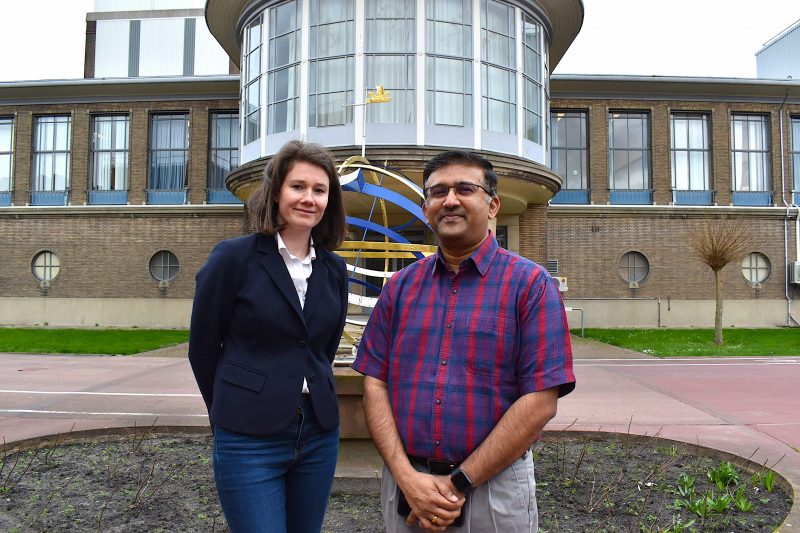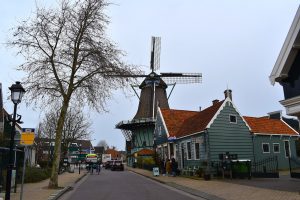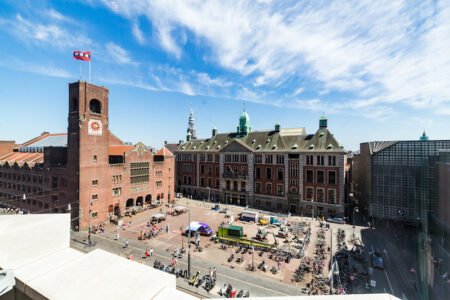Raising the cocoa bar with Olam’s global processing facility in Amsterdam

With a dozen production sites around the world, Olam Cocoa has grown rapidly over the past 15 years, as Neill Barston found visiting its key facility in the Netherlands
As anyone who has spent time within the cocoa sector will readily explain, it remains a complex, yet rewarding business segment that poses those who navigate its seasonal nature a number of key challenges.
While there are multiple factors upon which success within the industry depends, perhaps the most crucial element is the ability to deliver consistently strong quality crops to an ever-demanding global chocolate market projected to be worth over $160 billion by 2024.
Among the sector’s most prominent stories of recent times has been that of agri-business Olam. In the space of just over 30 years, it has grown from its African roots to become a multi-national enterprise employing more than 74,000 people across its diverse portfolio.
Earlier this year, the company set in motion a strategy to split its operations into two distinct units, one for agricultural activities, and a second, covering ingredients – including its Olam Cocoa division.
The business segment has gained a strong foothold across the world, with a dozen global processing facilities serving regional requirements.
Overall, the company presently has the capacity of grinding more than 820,000 metric tonnes of cocoa beans in an average year. This has resulted in the business becoming a partner to major chocolate confectionery manufacturers serving key global markets.
Its comparatively rapid rise is reflected by recent results from Statistics Netherlands (CBS), which reveal the Dutch nation has retained its standing as the world’s largest importer of cocoa beans.
Figures for 2018 showed crop volumes of 1.1 billion kg entering the country’s ports (including its major commercial hub of Amsterdam), with a value of €2.1 billion.
So the chance to take in Olam’s prime production site at Koog aan de Zaan offered some revealing insights into how the company tackles its global commitments.
Strong industrial heritage

As we approach the company’s facilities, it’s hard to spot the high level of related industry activity in the area that showcase just how closely intertwined with the cocoa and wider agri-food business the Amsterdam region is.
Among the well-established sector names operating nearby are Royal Duyvis Wiener, Cargill, Bunge Loders Croklaan and Tate and Lyle.
For its part, Olam may well be a relatively recent entrant to the cocoa sector, but it is continuing to make its making its mark as its expansion has highlighted. This is evidenced by the company’s facilities at Koog, which the business acquired from ADM in 2015, which have a heritage dating back a century.
Its story began in 1911 when four entrepreneurs founded the Chocoladefabriek De Zaan business. Just five years later, Jan Huysman became its sole owner, and went on to develop the deZaan cocoa factory which now stands as Olam’s largest such facility in its international sites.
With a total of over 200 people now operating across its sizeable production base on the banks of the river Zaan, this is the largest facility within the company’s portfolio. As such, there’s a bustling level of activity befitting a facility that operates on a global dimension.

Leading the tour of the site, Ajay Nair (pictured in main image with Irene ter Laak), plant manager, explains its operations maintain a continuous 24/7 schedule in order to meet targets for its international client base.
However, he says that as with any major commercial facility, there are short periods of essential maintenance that necessitate areas of the site to be briefly shut down to ensure the safe functioning of its facilities.
There’s a very strict policy on observance of health and safety protocols, which is matched by a clear approach of investing in staff through continuous training, which the business has found results in many employees remaining for a significant period with the company.
Nair notes there are many elements that pose tests on a daily basis in rising to meet production demands, but he notes it is the company’s strict insistence on monitoring cocoa supplies at every stage in the logistics chain – from Ivory Coast, Ghana and other global locations, through to final arrival in the Netherlands, maintaining the quality of beans is of paramount importance.
On a personal level, having gained 15 years experience with the business to his name, the plant manager enthuses there are always fresh production challenges that motivate him with his work, including shortly making a step up to manage its global cocoa projects.
Explaining his trajectory with the business, he reveals that it began with setting up the company’s initial cocoa processing facilities in Nigeria. From there, he went on to be involved with several other international ventures for the company before his present role.
“I had a big opportunity in joining Olam, which allowed me to try new things on a frequent basis, which keeps me busy and more engaged, says Nair.
“That’s the beauty of this company, in that there are many new challenges that are a real driver for me personally. As a company, we have come a long way from when I first started with the business working on managing a small project in Nigeria, to where we are now. We have a lot of ambitious plans for the site here with its prestigious deZaan brand that we acquired,” adds the manager.
He acknowledges his formative studies as a mechanical engineer, and early career working with Cadbury in India, were to prove invaluable in preparing him for the management tests he now faces. As he relays, the fact many employees remained with the business after ADM sold the business to Olam in 2015, continues to make a key difference regarding the quality of its overall operations, maintaining its status as a trusted industry partner.
Equally, as we move through the site at Koog he notes that the creation, and continual refining of the company’s computer-controlled internal monitoring systems for production processes are also extremely critical to ensuring delivery of its product ranges.
There’s no shortage of art-deco character to its main administrative buildings, and while Nair admits there are areas of the building that date to its foundation a century ago, the site has also incorporated more modern production facilities that he says are continually being evaluated as to how they can be updated.
Its two most striking features are the two wings housing some of the key production equipment lines. This includes high-capacity cocoa processors sourced from Royal Duyvis Wiener that have been adapted for the site, which occupy the top level of the facility.
The Lower levels of this impressive industrial landscape contain refiners and mixing conches which all operate on an automated basis, ensuring consistent performance, monitored by small dedicated teams of specialists.
“Koog is the facility in our company that has the ability to produce the most complex products in our portfolio, including almost every component relating to cocoa powder, which makes this place quite unique.
“It’s the largest processing site in our network and one of three we have in Europe, which include or Wormer site 5km away, as well as another in Mannheim, Germany. But here at Koog, we are able to produce cocoa mass, butter, cocoa cake, as well as cocoa powder for our speciality de zaan brand, which are all developed specifically for each customer, making it a very complex facility indeed,” adds Nair, nothing there is a strong sense of pride within its workforce, who are well aware of the history of the company.
Research and development
Beyond its broad processing capabilities, the Koog facility also has a notably strong innovation lab within the site, enabling an array of product recipe testing.
As Irene ter Laak, research and development manager, explains, her team works closely with its commercial clients, as well as across the business to proactively develop new ingredient and flavour possibilities.
She adds: “We focus on ingredient development and new technologies, so we are tackling the issues of sustainability and efficiency on a larger scale in our factories. In addition, we aim to use the knowledge from our plant science teams in handling speciality beans that we deal with, so we can process them in an optimal manner so that they have the desired characteristics in the finished products.”
Speaking on the company’s creation of two distinct business units, she believes it will have a notably positive impact for the business.
In particular, she adds that it will enable her team to develop areas of particular specialisms with regard to functional ingredients, as well as opening up opportunities to work with other colleagues across research teams.
“We are not dealing with daily production, but we look at the long-term view of what would work within processing facilities, examining how we could move to a more sustainable way of processing beans that will not impact on the quality of products. For instance, with roasting of beans, are there other technologies that we could use to get towards the desired flavour and aroma.
“In terms of development work, one example that one of my team came up with was our True Dark natural flavoured cocoa powder in 2015, which was created in our labs, then scaled up for production. It addresses clean label trends, as well as being one of the darkest cocoa powders that is produced naturally, so that’s the challenge for us now – how can we extend natural product lines even further,” she adds of the team’s goal of driving forward its range of innovative solutions for the confectionery sector.
From the continued investment in both physical plant facilities, as well across the wider business in terms of its R&D for ingredients developments, the company appears well placed for success as we enter a fresh decade.



